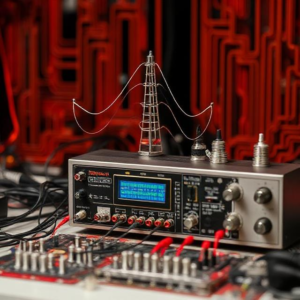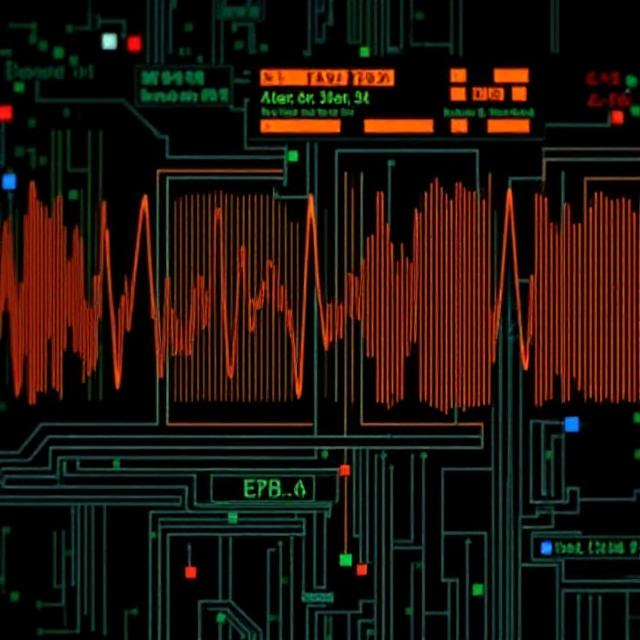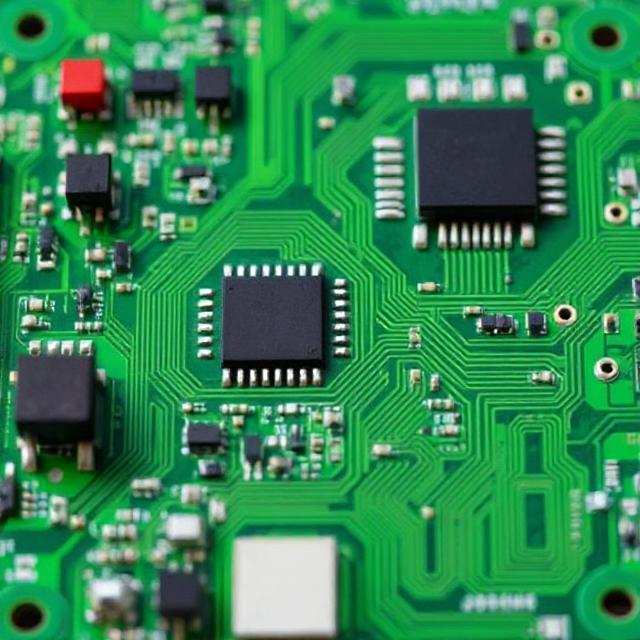What are RF Circuits?
RF circuits (Radio Frequency circuits) are electronic circuits designed to operate at high frequencies, typically in the range of 20 kHz to 300 GHz. These circuits are used to transmit and receive radio signals and are fundamental in applications such as radio communication, television, satellite systems, wireless networking, and radar systems. RF circuits are responsible for dealing with signals that have frequencies in the radio wave spectrum, which include everything from FM radio broadcasts to Wi-Fi and GPS signals’ circuits are the backbone of wireless communication and other technologies that use high-frequency signals. They enable everything from mobile phones to satellite TV to work efficiently.

Key Components of RF Circuits
- Resistors limit the flow of current.
- Capacitors store energy and release it when needed, and they can block DC signals while allowing AC signals to pass through.
- Inductors store energy in a magnetic field and are used in filtering and tuning applications.
These components are used in various ways to shape and manipulate RF signals.
- Transistors:
Transistors are used for amplification and switching of RF signals. They can take a small RF signal and amplify it to a level where it can be transmitted over long distances. Transistors also help in modulating signals for encoding information. - Antennas:
Antennas are critical in RF circuits because they are responsible for radiating or receiving electromagnetic waves. An antenna converts electrical signals into radio waves (and vice versa) and plays a key role in wireless communication systems. - Filters:
RF filters are used to select specific frequency bands and remove unwanted frequencies. They are essential for ensuring that RF signals are clean and do not interfere with other signals. - Oscillators:
Oscillators generate RF signals by creating a continuous wave at a specific frequency. They are used in RF circuits to generate carrier signals for transmitting data. - Mixers:
Mixers are used to combine two RF signals (or frequencies). This is crucial for modulation and demodulation, where one signal carries the data and another serves as the carrier wave. - Amplifiers:
RF amplifiers increase the power of an RF signal so it can travel further. These are essential in both the transmission and reception of RF signals.
How Do RF Circuits Work?
RF circuits work by processing radio frequency signals, typically through the following stages:
- Signal Generation:
An RF circuit may use an oscillator to generate a high-frequency signal (for example, a carrier wave). The frequency of this signal is important because it determines the channel or frequency band used for communication. - Signal Modulation:
The modulated signal is created by encoding information (like sound, video, or data) onto the carrier wave. This can be done using various modulation techniques, including Amplitude Modulation (AM), Frequency Modulation (FM), and Phase Modulation (PM). - Transmission:
The modulated signal is then sent to the amplifier, which boosts the signal’s power. This amplified signal is then fed to the antenna, which radiates it as electromagnetic waves into the air. This is the process of transmitting the RF signal. - Reception:
At the receiver end, an antenna captures the incoming RF signal and feeds it to a tuner that selects the desired frequency. The signal is then demodulated (decoding the information from the carrier wave) by the mixer and demodulator circuits. - Amplification:
The demodulated signal is then amplified by an RF amplifier to restore the signal’s strength and clarity. - Filtering and Processing:
Filters are used at various stages to remove unwanted noise or interference, ensuring that only the desired signal is processed. The cleaned-up signal is then passed to the appropriate circuit, like an audio or video processor, or sent to a digital system for further processing.
RF Circuit Design Considerations
Designing RF circuits can be complex because radio frequency signals behave differently from lower frequencies (like DC or audio signals). Here are some key considerations in RF circuit design:
- Impedance Matching:
In RF circuits, it’s crucial to ensure that the impedance of components (like antennas, cables, and amplifiers) match. If the impedance isn’t matched, there will be signal reflection or losses, which can lead to inefficient signal transmission. Impedance matching ensures maximum power transfer between components. - Signal Integrity:
RF signals are very sensitive to noise, interference, and distortion. Maintaining signal integrity is vital for clear communication, so shielding, proper grounding, and using high-quality components are essential in RF design. - Power Handling:
RF circuits must be designed to handle the power levels involved in transmission and reception. Amplifiers must provide sufficient gain, and components must be able to handle high-frequency signals without overheating or damaging. - Bandwidth:
The bandwidth of an RF circuit determines the range of frequencies it can effectively process. RF circuits must be designed with the appropriate bandwidth for the communication standard they are intended to support (e.g., Wi-Fi, Bluetooth, or cellular). - Nonlinear Effects:
At high frequencies, many components behave nonlinearly, which can distort the signal. Linear amplification is a goal for many RF designs to maintain a faithful reproduction of the input signal. - Thermal Effects:
RF components, especially power amplifiers, can generate significant heat. Managing this heat and maintaining stable temperatures is a challenge in RF circuit design.
Types of RF Circuits and Their Applications
- RF Oscillators:
Used to generate a stable RF signal for a variety of applications, including communication systems and radar. They serve as the backbone for creating carrier waves in RF systems. Example: Local oscillators in radios or television transmitters. - RF Amplifiers:
Amplify weak RF signals to a level suitable for transmission or further processing. Example: Power amplifiers in mobile phones or satellite communication systems. - Mixers:
Used in communication systems to convert the frequency of signals, such as down-converting high-frequency signals for easier processing. Example: In superheterodyne receivers used in radios. - Filters:
Remove unwanted frequencies from a signal to ensure only the desired signal is processed. Example: Bandpass filters in wireless routers to separate the desired Wi-Fi signal from other noise. - RF Modulators/Demodulators:
Modulators encode data onto a carrier signal, while demodulators decode the data from the carrier signal.Example: Amplitude or frequency modulation used in radio stations. - RF Transceivers:
Transceivers can both transmit and receive RF signals. They are used in communication systems to handle bidirectional communication.Example: The transmit and receive module in mobile phones or two-way radios.
Real-Life Applications of RF Circuits:
- Radio and Television Broadcasting:
RF circuits are essential for transmitting and receiving AM, FM, and TV signals. They include components like oscillators, amplifiers, and modulators. - Wireless Communication (Wi-Fi, Bluetooth, etc.):
RF circuits enable communication between devices in wireless technologies like Wi-Fi, Bluetooth, and Zigbee. They are used in mobile phones, laptops, and IoT devices. - Radar and Navigation Systems:
Radar systems use RF signals to detect objects and measure their distance and speed. This is used in aviation, weather monitoring, and military applications. - Satellite Communication:
RF circuits are used to send and receive signals from satellites. They are used in GPS systems, satellite TV, and satellite internet systems. - Microwave Systems:
RF circuits are used in microwave ovens, as well as microwave communication systems like point-to-point data transmission. - Medical Imaging (MRI):
RF circuits play a key role in medical devices like Magnetic Resonance Imaging (MRI) systems, where RF signals interact with magnetic fields to create images of the body’s internal structures.
Conclusion
- RF circuits are essential for handling high-frequency signals and are used in many areas of modern technology, from wireless communication to satellite systems and medical imaging.
- The basic building blocks of RF circuits include oscillators, amplifiers, mixers, filters, and antennas.
- Key design considerations include impedance matching, signal integrity, and thermal management.
- RF circuits are crucial in a wide range of applications, such as radio broadcasting, mobile communication, and radar systems.











